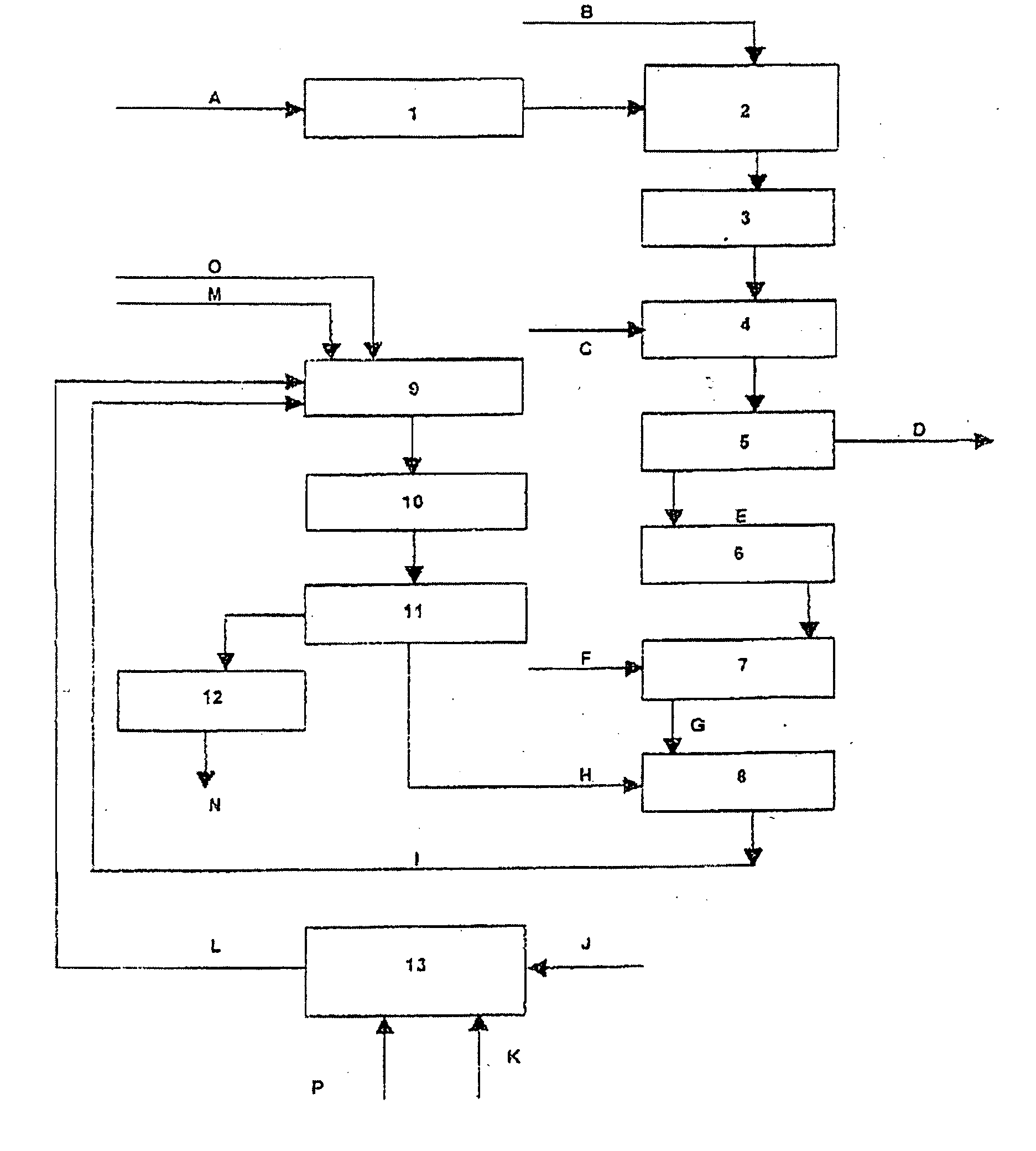Process for transforming sludge into NPK type granulated fertilizer
- Summary
- Abstract
- Description
- Claims
- Application Information
AI Technical Summary
Benefits of technology
Problems solved by technology
Method used
Image
Examples
example 1
[0085] 1) 84.175 kgs of sludge having a solid content of 4.5% are heated at 70° C. inside a tube type heater and transferred to a static mixer in which there are acidified by adding 3.139 kg of phosphoric acid at 54.2% in such way that by 100 kg of sludge in dry basis there are added 82.867 kg of base phosphoric acid until obtaining a pH of 2.0 or less.
[0086] 2) The acidified mass obtained in the static mixer is discharged into an agitated tank in order to complete the sludge disinfection. The permanence time of the acidified mass inside the agitated tank is 30 minutes.
[0087] 3) The hot acidified sludge free of pathogen microorganisms is transferred to an agitated tank into which are added 12.535 kg of a lime slurry having a calcium hydroxide content of 20%. The residence time of the sludge inside the agitated tank is 20 minutes in order to complete the reaction between the phosphoric acid and calcium hydroxide and obtain insoluble calcium phosphates comprising an 85% of tri-calci...
example 2
[0096] For the present example, steps 1-6 of example 1 are equally performed, applying the same operating conditions and adding the same quantity of reactives.
[0097] In this example there are incorporated to the final product potassium salts and enriched with ammonium sulfate, by which the production capacity is increased and the production costs are reduced, thus obtaining 25.046 kg of final product compared with 19.426 kg of final product produced in example 1.
[0098] In this example there are feed: [0099] 4.198 kg of potassium chloride having a K2 0 content of 60%, 0.300 kg of anhydride ammonia and pre-neutralized phosphoric acid to the granulator. [0100] 2.452 kg of sulfuric acid at a concentration of 93%, 6.149 kg of phosphoric acid at a concentration of 54.2% and 2.351 kg of anhydride ammonia to the pre-neutralizer.
[0101] The product exiting the granulator transferred to a rotary drier and afterwards to a sieve in order to classify the product by sizes.
[0102] The sieved gro...
PUM
| Property | Measurement | Unit |
|---|---|---|
| Temperature | aaaaa | aaaaa |
| Temperature | aaaaa | aaaaa |
| Fraction | aaaaa | aaaaa |
Abstract
Description
Claims
Application Information
 Login to View More
Login to View More - R&D
- Intellectual Property
- Life Sciences
- Materials
- Tech Scout
- Unparalleled Data Quality
- Higher Quality Content
- 60% Fewer Hallucinations
Browse by: Latest US Patents, China's latest patents, Technical Efficacy Thesaurus, Application Domain, Technology Topic, Popular Technical Reports.
© 2025 PatSnap. All rights reserved.Legal|Privacy policy|Modern Slavery Act Transparency Statement|Sitemap|About US| Contact US: help@patsnap.com


